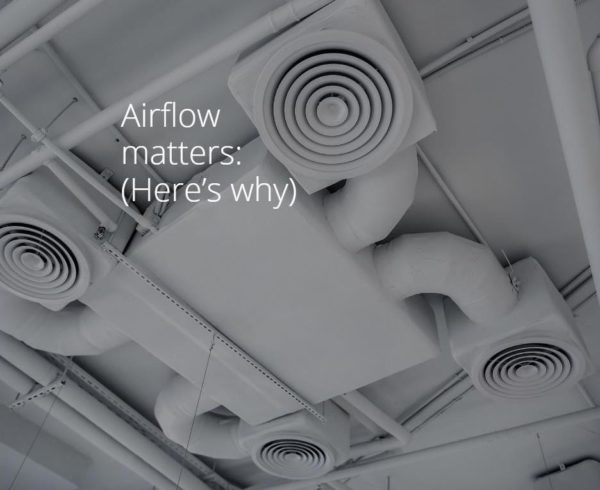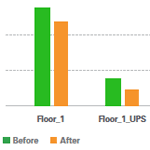 By John Taylor, Vigilent Managing Director, EMEA
By John Taylor, Vigilent Managing Director, EMEA
Published in the February 2017 edition of the Data Centre Alliance Monthly Journal, the publication of DCS Europe
In a perfect world, data centres operate exactly as designed. Cold air produced by cooling systems will be delivered directly to the air inlets of IT Load with the correct volume and temperature to meet the SLA.
In reality, neither of these scenarios occur. The disconnect is airflow – invisible, dynamic, and often counterintuitive; airflow is completely susceptible to even minor changes in facility infrastructure.
Properly managed, correct airflow can deliver significant energy reductions and a hotspot-free facility. Add dynamic control, and you can ensure that the optimum amount of cooling is delivered precisely where it’s needed, even as the facility evolves over time.
 Airflow challenges
Airflow challenges
Why does airflow go awry, even within meticulously maintained facilities? The biggest factor is that you can’t see what is happening. Hotspots are notoriously difficult to diagnose, as their root cause is rarely obvious. Fixing one area can cause temperature problems to pop up in another. When a hot spot is identified, a common first instinct is to bring more air to the location, usually by adding or opening a perforated floor tile.
Temperatures may actually fall at that location. But what happens in other locations? As floor tiles proliferate, a greater volume of air, and so more fan energy, is required to meet SLA commitments at the inlets of all equipment.
Consider that fans don’t cool equipment. Fans distribute cold air, while adding the heat of their motors to the total heat load in the room. As the fan speed increases, power consumption grows with the cube of their rotation. Opening holes in the floor to address hot-spots is ultimately self-limiting.
Increased fan speed also increases air mixing, disrupting the return of hot air back to cooling equipment and compromising efficiency. We often see examples of the Venturi effect, where conditioned air blows past the inlets of IT equipment, leaving IT equipment starving for cooling.
Ideally, conditioned air should move through IT equipment to remove heat before returning directly to the air conditioning unit. If air is going elsewhere, or never flows through IT equipment, efficiency is compromised.
Poorly functioning or improperly configured cooling equipment can also affect airflow. Even equipment that has been regularly maintained, and appears on inspection to be working, may in reality be performing so poorly that it actually produces heat. And facility managers don’t realize when this occurs.
The data is typically not available. Containment is often deployed to gain efficiency by separating hot and cold air. Unfortunately, most containment isn’t properly configured and can work against this objective. Even small openings in containment or non-uniformly distributed load can lead to hot spots. Where pressure control is used, small gaps lead to higher fan speeds in order to properly condition the contained space.
Better airflow management through dynamic control
So how can airflow be better managed? First you need data. And not just a temperature sensor on the wall, or return air temperature sensors in your cooling equipment. Airflow is best managed at the point of delivery where the conditioned air enters the IT equipment.
Since airflow distribution is uneven, sensing and presenting the temperatures at many locations within each technical room will provide the best visibility into airflow. And instrumentation of cooling equipment can reveal which units are working properly and which machines may require maintenance.
Next, you need intelligent software that can measure how the output of each individual cooling unit influences temperatures at air inlets across the entire room. When a cooling unit turns on or off, temperatures change throughout the room. It’s possible to track and correlate changes in rack inlet temperatures with individual cooling units to create a real-time empirical model of how air moves through a particular facility at any moment.
And finally, you need automatic control. Cooling equipment and fan speeds that are adjusted dynamically and in real-time will deliver the right amount of conditioned air to each location. Machine learning techniques ensure that cooling unit influences are kept up to date over time.
This article appeared in the February 2017 edition of the Data Centre Alliance Monthly Journal, the publication of DCS Europe. You can also read the original article.



